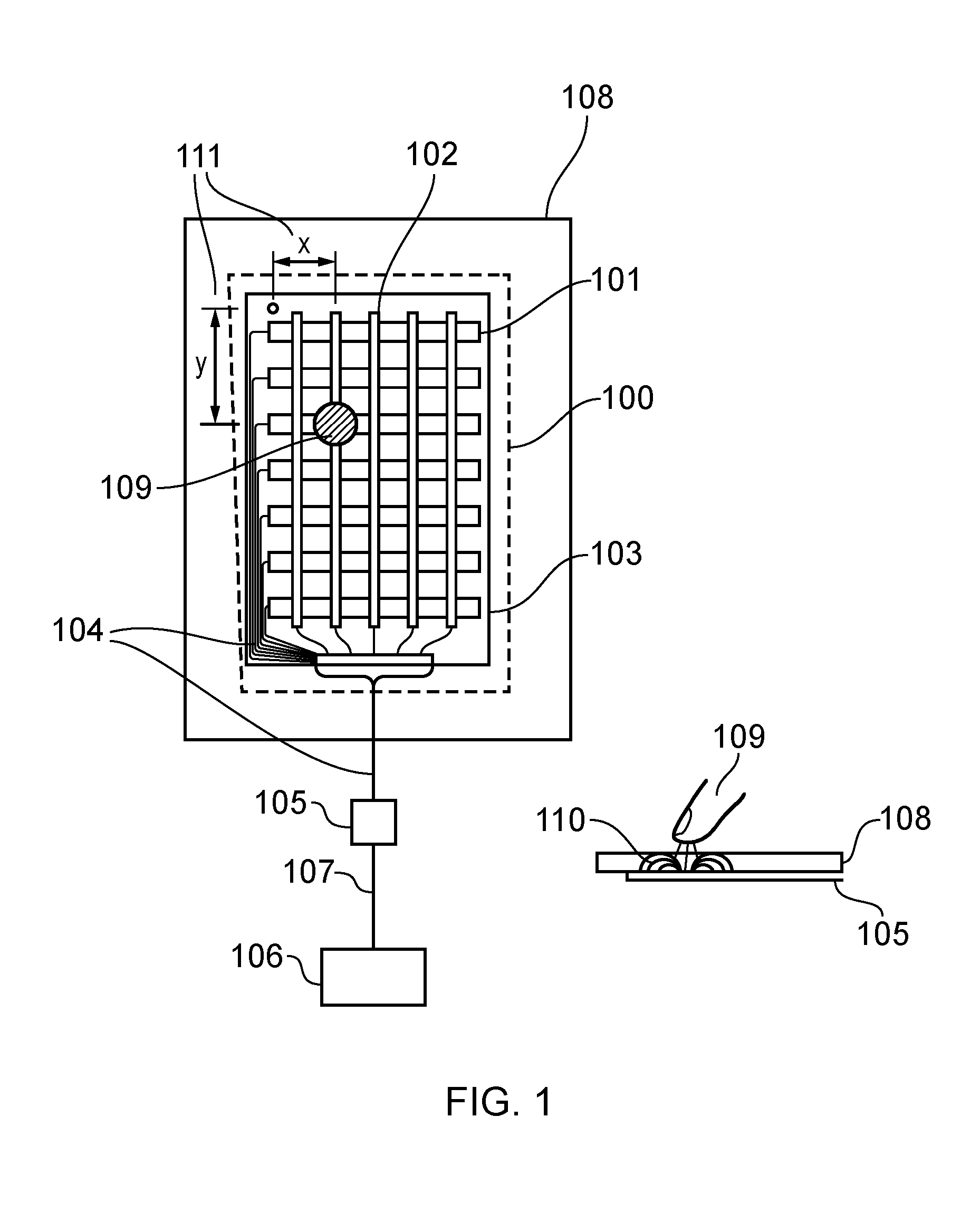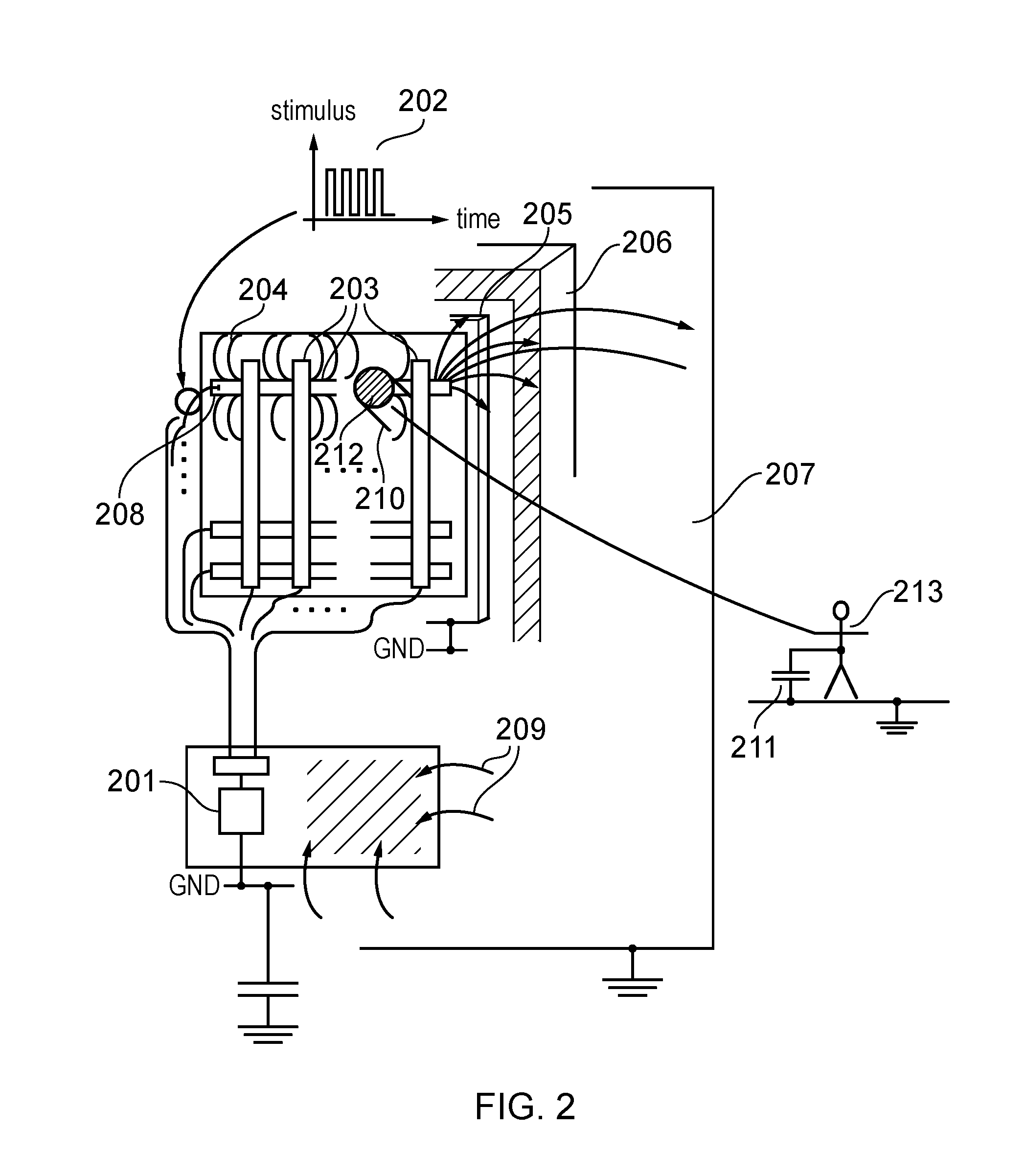Touch sensor for non-uniform panels
a touch sensor and non-uniform panel technology, applied in the direction of instruments, using electrical/magnetic means, electric/magnetic measurement arrangements, etc., can solve the problems of low jitter positional data using a regular sensor electrode design, poor snr of the underlying sensor to a touch, and inability to accurately calculate the positional data
- Summary
- Abstract
- Description
- Claims
- Application Information
AI Technical Summary
Benefits of technology
Problems solved by technology
Method used
Image
Examples
application examples
General Points & Application Examples
[0077]It will be understand that the general prior art structures and features described in relation to FIGS. 1 to 4, such as a host processing system, a communication interface 107 and a controller chip, may be incorporated in devices, systems and sub-systems embodying the invention. Moreover, in touch screen embodiments it will be understood that a planar display, such as a liquid crystal display or a light emitting diode display will be arranged under the touch sensor.
[0078]It will be appreciated that the sensor according to embodiments of the invention is applicable to many types of device / appliance. For example, sensors can be used with ovens, grills, washing machines, tumble-dryers, dish-washers, microwave ovens, food blenders, bread makers, drinks machines, computers, home audiovisual equipment, personal computers, portable media players, PDAs, cell phones, computers, games consoles and so forth.
[0079]In some cases, variations in the cover...
PUM
 Login to View More
Login to View More Abstract
Description
Claims
Application Information
 Login to View More
Login to View More - R&D
- Intellectual Property
- Life Sciences
- Materials
- Tech Scout
- Unparalleled Data Quality
- Higher Quality Content
- 60% Fewer Hallucinations
Browse by: Latest US Patents, China's latest patents, Technical Efficacy Thesaurus, Application Domain, Technology Topic, Popular Technical Reports.
© 2025 PatSnap. All rights reserved.Legal|Privacy policy|Modern Slavery Act Transparency Statement|Sitemap|About US| Contact US: help@patsnap.com



